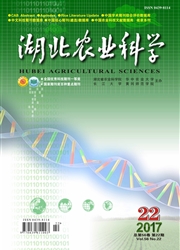

 中文摘要:
中文摘要:
根据1984-2013年农业统计数据,利用GM(1,1)模型对2014-2023年福建省粮食产量及其影响因素进行预测。通过对1984-2013、2006-2013和2014-2023年3个阶段内自然、科技、经济及政策因素对粮食产量的影响进行分析,提出政策建议,为福建省粮食生产的持续发展和科学决策提供借鉴。结果表明,1在微观层面,1984-2013年间粮食播种面积、农村劳动力人数和有效灌溉面积对粮食产量影响较大;2006-2013年粮食播种面积依然是影响粮食生产的关键因素,但化肥施用量和粮价的影响程度超过了农村劳动力人数和有效灌溉面积;2014-2023年自然灾害和化肥施用量超过粮食播种面积成为关键因素。2在宏观层面,1984-2013年自然条件的影响最大,其次是经济和科技因素;2006-2013年科技因素的影响相对上升,但政策因素的影响十分微弱;2014-2023年自然和经济因素的影响相对上升,且后者上升得更为明显。
 英文摘要:
英文摘要:
Based on agricultural statistics from 1984 to 2013,the GM(1,1) model was aimed to predict grain yield and its influence factors in Fujian province from 2014 to 2023. The natural,technological,economic and political factors affecting grain yield in the years of 1984-2013,2006-2013 and 2014-2023 were analyzed respectively. Some policy recommendations were put forward in order to provide references for the sustainable development and scientific decision-making of grain production in Fujian province. The results showed that,1At the micro level,the planting area, rural labor and irrigation area have great impact on food production from 1984 to 2013. The planting area was still the key factor affecting grain production from 2006 to 2013,but the impacts of chemical fertilizer and food price exceeded the rural labor and irrigation area. Natural disaster and chemical fertilizer were the key factors,exceeded planting area from 2014 to 2023. 2 At the macro level,the natural factor had great impact on food production,followed by economic and technological factors from 1984 to 2013. The impact of technological factor have a relativerise,but the impact of political factor was very weak from 2006 to 2013. The impacts of natural and economic factors rose relatively,and the latter have more obvious rise from 2014 to 2023.
 同期刊论文项目
同期刊论文项目
 同项目期刊论文
同项目期刊论文
 Research on Energy Conservation and Emission Reduction Based on the Economic Transformation and Upgr
Research on Energy Conservation and Emission Reduction Based on the Economic Transformation and Upgr 期刊信息
期刊信息
